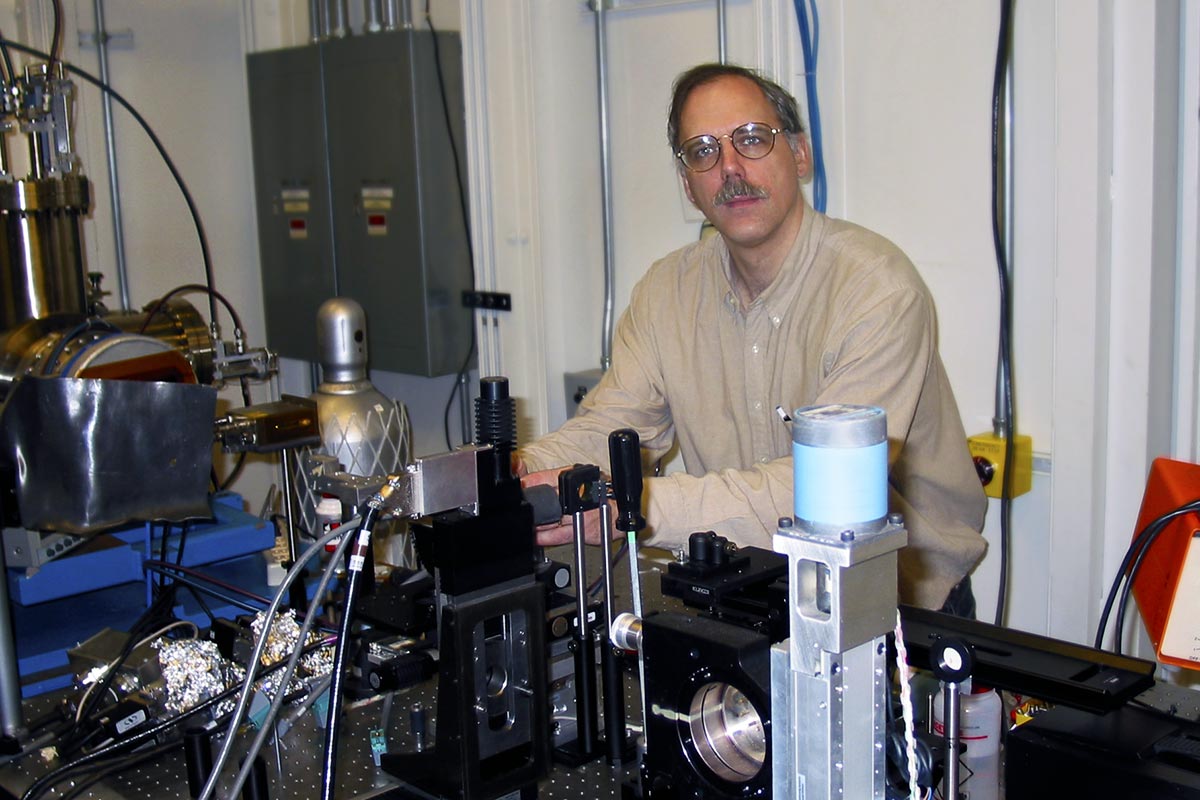COURSE AUTHOR
Denton Ebel

Denton Ebel is associate curator in the Department of Earth and Planetary Sciences at the American Museum of Natural History. He grew up in Riverside, Connecticut, where he learned about rocks and minerals from his father, an industrial research chemist. He received a B.A. in sociology from Harvard College in 1982 and studied geology at Purdue University, from which he earned a Ph.D. in 1993.
Dr. Ebel began his research career by investigating how silver, copper, nickel, and platinum-group metal ores form in the Earth. By seeing how sulfide minerals react in the laboratory, he was able to model their thermodynamic properties and develop predictive tools for finding metal-rich rock in existing mines. After graduating from Purdue, he and his family moved to Canada so he could pursue a postdoctoral fellowship at the University of Toronto.
Less than two years later, a phone call from Dr. Lawrence Grossman of the University of Chicago presented Dr. Ebel with the opportunity to apply his knowledge of terrestrial rocks to the study of meteorites. Dr. Grossman was looking for a geochemist who could write computer code that could be used to figure out the origin of chondrules. Found in most meteorites, chondrules are round grains that formed as droplets in space before being accreted into meteorites; they record processes that preceded the formation of the planets.
Although he'd never studied computer science, Dr. Ebel had written Fortran and BASIC code for his own research calculations, so in 1995 the family moved to Chicago and he became a "computational cosmochemist." Dr. Ebel's field area is the distant, resource-rich asteroid belt, the source of random debris such as chondrites, the most common kind of meteorites. At Chicago, he predicted how a vapor of solar system composition would condense to solids and liquids under astrophysically realistic conditions, and compared the results to the solid minerals and solidified liquids (glasses) preserved in the oldest meteorites.
This diverse experience led the Museum to hire Dr. Ebel as curator of the meteorite collection, and the Ebels moved to New York in July 2001. In his research he continues to model how gas, solid, and melt phases interact at high temperatures and low pressures, and to analyze samples at the finest possible resolution for their chemical, isotopic, textural, and other characteristics. This helps us understand how solids and molten rock droplets first formed in the solar system, a process that eventually led to the accretion of the planets. Dr. Ebel also applies X-ray, CAT scan, and microscopic imaging to obtain two- and three-dimensional images of how meteorites are put together.
As the curator of the AMNH meteorite collection, Dr. Ebel loans research specimens to scientists worldwide, and headed up the creation of the new Arthur Ross Hall of Meteorites. "Collections-based research is vital to the exploration of space and a better understanding of our origins," he explains. He is a member of the Geochemical Society, the American Association for the Advancement of Science, the Meteoritical Society, and numerous other scientific organizations.